#NASA chief warns Congress about Chinese space station
Photo
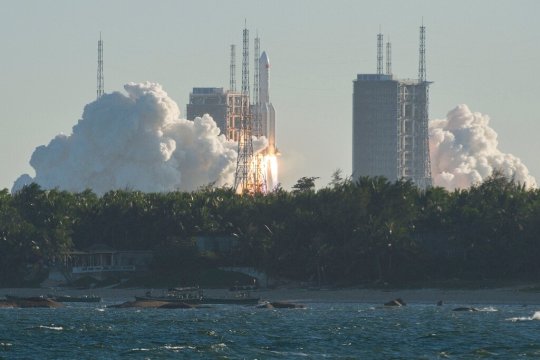
NASA chief warns Congress about Chinese space station via /r/space https://ift.tt/30369Bk
0 notes
Text
NASA chief warns Congress about Chinese space station
Washington (AFP) Sept 23, 2020
NASA chief Jim Bridenstine told lawmakers Wednesday it was crucial for the US to maintain a presence in Earth's orbit after the International Space Station is decommissioned so that China does not gain a strategic advantage. The first parts of the ISS were launched in 1998 and it has been continuously lived in since 2000. The station, which serves as a space science lab and is a partners
Full article>>
12 notes
·
View notes
Photo
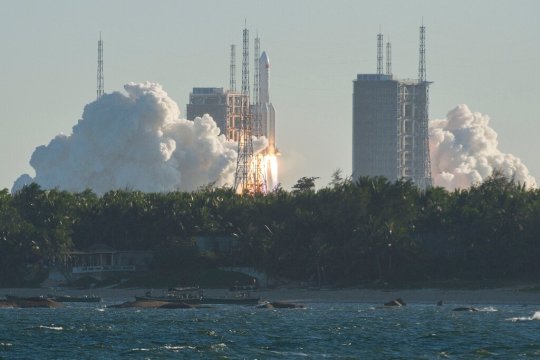
NASA chief warns Congress about Chinese space station https://ift.tt/364mlGb
9 notes
·
View notes
Text
NASA urged to avoid space station gap
https://sciencespies.com/space/nasa-urged-to-avoid-space-station-gap/
NASA urged to avoid space station gap
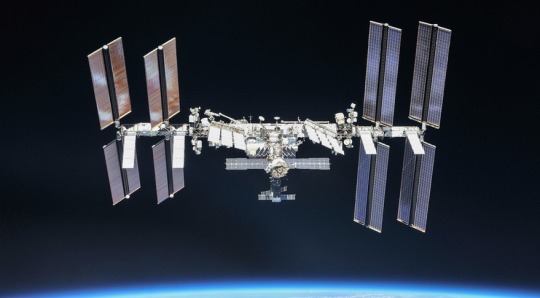
WASHINGTON — NASA needs to ensure that commercial space stations are ready before the International Space Station is retired to avoid a “space station gap” with geopolitical consequences, industry officials and other advisers warn.
NASA’s low Earth orbit commercialization strategy calls for the development of one or more commercial space stations by late this decade, allowing NASA to transition research currently done on the ISS to those facilities and then retire the ISS, likely around 2030. NASA is currently evaluating an estimated 10 to 12 proposals submitted by companies seeking one of several Commercial LEO Development (CLD) contracts for initial studies of commercial stations.
That transition “will allow NASA to shift significant financial and personnel resources towards exploration objectives,” said Robyn Gatens, director of the ISS program at NASA Headquarters, at a Sept. 21 hearing of the House space subcommittee on the topic. That includes a roughly two-year transition period where NASA will shift activities from the ISS to those commercial stations.
At the hearing, another witness warned of the consequences of retiring the ISS before commercial successors are ready. “The challenge to ensure a seamless transition is more urgent today than with the shuttle time, as our reliance on space assets is far greater today and others seek to fill even the perception of any voids,” said Jeffrey Manber, chief executive of Nanoracks, a company that seeks to develop a commercial space station. “There is no room for error lest we cede leadership to other nations.”
That means in particular China, which had launched the core module of its space station that it plans to build out over the next few years. Manber warned last month that his company had already lost an unnamed customer who decided to fly a payload on that space station rather than on the ISS through Nanoracks.
“I don’t fear cooperation or competition with China,” he said, “but we cannot allow even the perception that we will cede our 20-plus years of humans working in LEO to others.” He asked the committee to support the CLD program “to ensure there is no space station gap.”
Todd Harrison, director of the Aerospace Security Project of Center for Strategic and International Studies, said China was America’s biggest competitor in space. “The real objective of this race is to see who can build the broadest and strongest coalition,” he said. “Whatever group of nations emerges as the loading coalition in space over the next decade will be the one that sets the de facto norms for space commerce and exploration that follows.”
Funding NASA’s LEO commercialization strategy has been difficult. NASA requested $150 million in fiscal years 2020 and 2021 but received only $15 million and $17 million, respectively. The agency requested $101.1 million in its fiscal year 2022 budget proposal, but a House spending bill in July offers only $45 million for the program. The Senate has yet to take up its version of a spending bill.
Rep. Randy Weber (R-Texas) questioned the pace of NASA’s commercialization program. “Isn’t NASA risking leaving low Earth orbit to the Chinese by setting up development programs to begin in a year or two?” he asked, suggesting that the agency “double down” on its existing agreement with Axiom Space, which will attach a series of commercial modules to the ISS as a step toward its own commercial station.
“We believe we need multiple paths so that we have the greatest chance of success for one or, hopefully, more commercial LEO platforms,” Gatens responded. “The Axiom commercial element on space station is one of those paths.”
She added that NASA is working on an updated version of an ISS transition plan that will be delivered to Congress in the “coming weeks,” addressing congressional concerns about a lack of details. The new report, she said, “is a much more thorough strategic and tactical plan for ISS transition,” including more details on NASA’s requirements in LEO and cost projections.
That transition plan hinges on the ISS continuing operation through the end of the decade. Recent problems on the station, including cracks in a Russian module that caused a small but persistent air leak, as well as problems with the Nauka module during its docking with the station in July, have raised doubts about the station’s long-term viability.
William Shepherd, the former NASA astronaut who commanded the first long-duration ISS expedition more than 20 years ago, said NASA needed to establish a “much more intimate working relationship with our Russian counterparts” to better understand those issues, something he said existed early in the program.
Of the cracks seen in one Russian module, he called for more work to get to the root cause of the issue. “They don’t exactly understand why these cracks are appearing now,” he said of Russian and American engineers. “I don’t think the station is in any immediate danger, but before we clear the station for another so many years of operational use, we should better understand this.”
NASA’s Aerospace Safety Advisory Panel, meeting Sept. 23, said it was also monitoring the issues with the air leaks and the Nauka docking. Members called on NASA to make sure, as it plans to extend ISS operations through the end of the decade, that it work to ensure there is no gap with any commercial successors.
“NASA should clearly communicate to industry its expectations regarding requirements and timeline, and make sure we have an overlap with the ISS,” said George Nield, a member of the panel. “Absent appropriate, timely funding, there is a risk of having a gap since the only thing that can give way is the schedule.”
#Space
0 notes
Photo
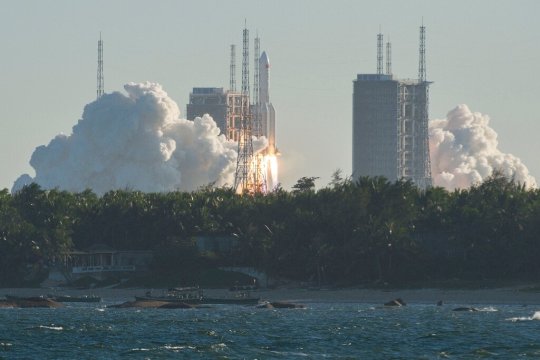
"NASA chief warns Congress about Chinese space station"- Detail: https://ift.tt/364mlGb. Title by: Gari_305 Posted By: www.eurekaking.com
0 notes
Text
NASA chief warns Congress about Chinese space station via /r/China
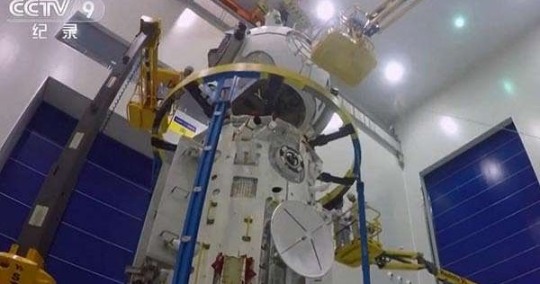
NASA chief warns Congress about Chinese space station
https://ift.tt/3mRGqWv
Submitted September 24, 2020 at 12:25PM by spacewal
via reddit https://ift.tt/2RYb6Hm
0 notes
Text
NASA chief warns Congress about Chinese space station

Full article >>
10 notes
·
View notes
Text
Space station maneuvers to avoid debris
https://sciencespies.com/space/space-station-maneuvers-to-avoid-debris/
Space station maneuvers to avoid debris
WASHINGTON — The International Space Station maneuvered to avoid a potential collision with a piece of space debris Sept. 22, an incident the head of NASA used to advocate for more funding for the agency directed to handle space traffic management.
NASA announced on the afternoon of Sept. 22 that it was working with U.S. Space Command to track an unidentified piece of debris expected to pass within a few kilometers of the station at 6:21 p.m. Eastern that day. Controllers fired the thrusters on a Progress spacecraft docked to the station for two and a half minutes about an hour before that closest approach to keep the station clear of the debris.
The object, projected to come within 1.39 kilometers of the station, passed without incident. While the station’s three-person crew was not in danger, NASA said that they did board their Soyuz spacecraft docked to the station for a time “out of an abundance of caution” until the threat passed.
NASA did not identify the debris in statements about the close approach. Later, space analyst Jonathan McDowell said it was debris from an upper stage of a Japanese H-2A rocket that launched the Ibuki-2, or GOSAT-2, Earth science satellite in October 2018. That upper stage, left in an orbit more than 100 kilometers above the ISS, broke up in February 2019. More than 70 objects from that stage are currently being tracked.
The debris object that ISS avoided is now available on SpaceTrack as 2018-084CQ, 46477, from the breakup of Japan’s H-2A F40 rocket stage. At 2221:07 UTC it passed within a few km of ISS at a relative velocity of 14 6 km/s, 422 km over the Pitcairn Is in the S Pacific pic.twitter.com/2T3yFQoFMT
— Jonathan McDowell (@planet4589) September 22, 2020
Many in the space safety community have warned that upper stages can be a leading contributor to the growth of space debris, given their sizes and because many are deposited in similar orbits, increasing the risk of collisions with one another. Upper stages can break apart on their own because of residual propellant that bursts tanks or batteries that explode.
NASA Administrator Jim Bridenstine, in a tweet after the debris avoidance maneuver, expressed some frustration. “The @Space_Station has maneuvered 3 times in 2020 to avoid debris. In the last 2 weeks, there have been 3 high concern potential conjunctions. Debris is getting worse!” he wrote.
According to an August newsletter by NASA’s Orbital Debris Program Office, the ISS previously maneuvered to avoid debris on April 19 and July 3. The first maneuver was to avoid debris from Fengyun-1C, a Chinese weather satellite destroyed in a 2007 anti-satellite weapons test. The second maneuver was caused by debris from a Soviet-era upper stage motor, launched in 1987 and which broke apart in 2003. The report noted that the motor suffered a design flaw that has resulted in more than 50 such breakups to date.
Before this latest close approach, the ISS had maneuvered 27 times to avoid debris dating back to 1999, the year after the launch of the station’s first two modules. Before 2020, the most recent maneuvers were in 2015, when four took place, although in 2017 a potential close approach to the station by the Global Precipitation Measurement satellite prompted a maneuver by the satellite, rather than the station.
NASA currently works closely with the Defense Department on monitoring potential collisions of debris with the ISS and other agency spacecraft. That cooperation was highlighted at a Sept. 22 event where Bridenstine and Gen. John “Jay” Raymond, chief of space operations of the U.S. Space Force, announced the signing of a new memorandum outlining cooperation between the agency and the service.
“We partner in space situational awareness. We have NASA representatives on our operations floor,” Raymond said at the Mitchell Institute event. “One of the thousands and thousands of objects that we track, and the most critical object that we track, is the International Space Station, making sure that we can keep that asset safe and protect the astronauts that call that home.”
Space Policy Directive 3, signed by President Donald Trump in June 2018, called for the Commerce Department, through its Office of Space Commerce, to take on civil space traffic management responsibilities currently handled by the Defense Department. That effort, though, has been slowed by a lack of funding.
Bridenstine, in his tweet, advocated for the funding that Commerce requested for that work. “Time for Congress to provide @CommerceGov with the $15 mil requested by @POTUS for the Office of Space Commerce,” he wrote.
The Commerce Department requested $15 million for the Office of Space Commerce in its fiscal year 2021 budget proposal, with the bulk of the funding going to space traffic management work. A spending bill passed by the House in July, though, rejected that request because it was still awaiting the final report requested by a fiscal year 2020 spending bill to examine which agency was best suited for civil space traffic management.
That report, published by the National Academy of Public Administration (NAPA) Aug. 20, concluded that the Commerce Department was the best agency for civil space traffic management compared to NASA, the Defense Department and the FAA’s Office of Commercial Space Transportation. Commerce Department officials said at the time that they hoped the report would convince Congress to fund their budget request for the Office of Space Commerce.
“We continue to see serious risk of harm to the astronauts aboard the International Space Station, billions of dollars invested in current space capabilities and the growth of space commerce,” Kevin O’Connell, director of the Office of Space Commerce, said of space debris during a Sept. 16 session of the AMOS space surveillance conference held online.
In his remarks, O’Connell highlighted current and planned cooperation with other agencies, including NASA and the Defense Department, on space traffic management. He also emphasized the need for funding for his office to take on that work. “Resources are absolutely key to making the kind of progress we need to make right now,” he said. “We have said that, [Commerce] Secretary [Wilbur] Ross has said that, and we’re pleased that NAPA highlighted this as well in their report.”
#Space
0 notes
Text
Headlines
As crises rock Earth, humans look to Mars
(Washington Post) On Thursday, NASA is slated to launch another mission to Mars. The U.S. space exploration agency plans to deploy a new rover—a $2.7 billion, six-legged, car-size machine dubbed Perseverance—to continue the prowl over the Red Planet’s rocks and craters, scanning the grounds of what’s believed, billions of years ago, to have been a river delta and deep lake in search of fossilized microbial evidence of Martian life. Last Thursday, China launched its first attempt to land on the planet, sending off probe Tianwen-1 (meaning “to question the heavens”) from a site on the southern island of Hainan. It includes both an orbiter that will take images and measurements while circling the planet and a rover intended for the Martian surface. The Chinese launch came four days after the United Arab Emirates’ first major foray beyond the Earth’s orbit—the Amal probe rocketed off from a facility in Japan and is scheduled to enter the Martian orbit around February 2021, in time for the Arab monarchy’s celebration of the 50th anniversary of its country’s formation. Mars, as it has for centuries, offers a tantalizing mirror to those on Earth, as a nearby world whose geology may contain secrets about our own.
The Global God Divide
(Pew Research Center) What is the connection between belief in God and morality? And how important are God and prayer in people’s lives? Pew Research Center posed these questions to 38,426 people in 34 countries in 2019. Across the 34 countries, which span six continents, a median of 45% say it is necessary to believe in God to be moral and have good values. But there are large regional variations in answers to this question. People in the emerging economies included in this survey tend to be more religious and more likely to consider religion to be important in their lives, and they are also more likely than people in this survey who live in advanced economies to say that belief in God is necessary to be moral. Despite variances in religious observance, a median of 62% across the countries surveyed say that religion plays an important role in their lives, while 61% agree that God plays an important role in their lives and 53% say the same about prayer. Since 1991, the share of people who say God is important to them has increased in Russia and Ukraine, while the opposite has occurred over the same time span in Western Europe.
Dollar status in danger?
(Bloomberg) Goldman Sachs put a spotlight on the suddenly growing concern over inflation in the U.S. by issuing a bold warning yesterday that the dollar is in danger of losing its status as the world’s reserve currency. With Congress closing in on another round of fiscal stimulus to shore up the pandemic-ravaged economy, and the Federal Reserve having already swelled its balance sheet by about $2.8 trillion this year, Goldman strategists cautioned that U.S. policy is triggering currency “debasement fears” that could end the dollar’s reign as the dominant force in global foreign-exchange markets. While that view is clearly still a minority one in most financial circles—and the Goldman analysts don’t say they believe it will necessarily happen—it captures a nervous vibe that has infiltrated the market this month: Investors worried that this money-printing will trigger inflation in years ahead have been bailing out of the dollar and piling furiously into gold.
Cigarette Smoking Makes Comeback During Coronavirus Pandemic
(WSJ) Americans are smoking more during the coronavirus pandemic because they are spending less on travel and entertainment and have more opportunities to light up. They are also switching back to traditional cigarettes from vaping devices in the wake of federal restrictions on e-cigarette flavors. Executives at Marlboro maker Altria Group Inc. pointed to the trends Tuesday and said they have been significant enough to slow the yearslong decline in U.S. cigarette sales. Cigarette smoking is associated with more than 480,000 deaths a year in the U.S., according to the Centers for Disease Control and Prevention.
Oregon governor says US agents will start leaving Portland
(AP) Federal agents who have clashed with protesters in Portland, Oregon, will begin a “phased withdrawal” from the city, Gov. Kate Brown said Wednesday. Acting Homeland Security Secretary Chad Wolf said in a statement the plan negotiated with Brown over the last 24 hours includes a “robust presence” of Oregon State Police in the downtown of the state’s largest city. Agents with the U.S. Customs and Border Protection and U.S. Immigration and Customs Enforcement will begin leaving the city’s downtown area on Thursday, Brown said. Federal Protective Service agents—who are always posted at the Mark O. Hatfield Federal Courthouse—will work alongside state police to guard the exterior of the courthouse and a limited number of other federal agents will remain inside the courthouse, she said.
US to bring 6,400 troops home from Germany, move 5,600 more
(AP) Spurred on by President Donald Trump’s demand to pull troops out of Germany, the U.S. will bring about 6,400 forces home and shift about 5,600 to other countries in Europe, U.S. defense leaders said Wednesday, detailing a Pentagon plan that will cost billions of dollars and take years to complete. The decision fulfills Trump’s announced desire to withdraw troops from Germany, largely due to its failure to spend enough on defense. A number of forces will go to Italy, and a major move would shift U.S. European Command and Special Operations Command Europe from Stuttgart, Germany, to Belgium. Defense Secretary Mark Esper said that some moves will begin in months and will leave about 24,000 troops in Germany. He said that while the decision was “accelerated” by Trump’s orders, the moves also promote larger strategic goals to deter Russia, reassure European allies and shift forces further east into the Black Sea and Baltic regions. Esper said the moves will cost in the “single digit” billions of dollars.
Europe scrambles to avoid a second coronavirus wave, as infections rise
(Washington Post) Several European countries that had their coronavirus outbreaks under control have begun to see a rise in cases that is feeding fears of a second wave. Governments are urging their citizens to be more vigilant amid the lure of summer gatherings and vacations, while health officials warn that lax public attitudes are putting the continent on a dangerous trajectory. A spike in infections has led Belgium to ramp up restrictions on social contact, while Spain has closed gyms and nightclubs in Barcelona. Meanwhile, German health officials have called a rise in infections in the past two weeks deeply concerning. “People are being infected everywhere,” said Ute Rexroth, head of surveillance at Germany’s Robert Koch Institute, which sounded the alarm on rising numbers on Tuesday. “Weddings, meetings with friends, sadly, also nursing homes or health institutes. We are worried that this could be a change of trend.” The rise in cases across several countries follows weeks of stability that had ushered in a growing sense of normalcy. A wave of reopening measures had come and gone without significant ill effect. People went to movies, dined at restaurants and started working from offices again.
An oil spill in Russia’s Arctic exposes risks for Moscow’s Far North plans
(Washington Post) The surge in climate change in interior Russia—more than three times the global average—is throwing new risks in the way of President Vladimir Putin’s Far North agenda, among his top domestic initiatives. A key danger is piling more infrastructure atop rapidly thawing permafrost, land that remains frozen year after year. As the permafrost destabilizes, so will the buildings, oil and gas pipelines, roads, railways, and military bases built on top of it, environmentalists and others warn. This is what metals giant Norilsk Nickel claims happened in late May at its power station about 200 miles north of the Arctic Circle. Melting permafrost shifted the foundation and ruptured a fuel reservoir, sending 21,000 tons of diesel into a fragile ecosystem of rivers and wetlands. “The area should be declared an ecological disaster zone,” said Roman Desyatkin, who studies permafrost and is based in the Siberian city of Yakutsk.
Hong Kong warns city on verge of large coronavirus outbreak
(Reuters) Hong Kong leader Carrie Lam has warned the city is on the brink of a large-scale outbreak of the coronavirus and urged people to stay indoors as much as possible as strict new measures to curb the disease’s spread take effect on Wednesday.
Flooding, mudslides hit northern Japan after heavy rainfall
(AP) Heavy rain poured over northern Japan on Wednesday, flooding residential areas and prompting warnings of mudslides. The Mogami River in Yamagata prefecture flooded four areas following an overnight downpour, leaving several towns inundated, chief government spokesman Yoshihide Suga said. Another river overflowed its banks in nearby Akita prefecture, he said. TV footage showed rescuers paddling rubber boats in residential areas, looking for stranded people, and groups of homes in a sprawling lake of muddy water. Heavy rainfall was expected throughout Wednesday including in some areas near Tokyo. The southwestern area of Kyushu was hit with heavy rain earlier this week.
Former Malaysian PM guilty of money laundering
(NYT) Najib Razak, the former prime minister of Malaysia, was found guilty of money laundering, abuse of power and other charges Tuesday, in connection to allegations that toppled his government two years ago and shook the financial world. He was sentenced to 12 years in prison and handed down a fine of nearly $50 million.
Israeli artist takes aim at Netanyahu with life-size statue
(AP) Residents of the city of Tel Aviv woke up Wednesday to a jarring site: a pop-up exhibit depicting a life-size statue of Israeli Prime Minister Benjamin Netanyahu enjoying a lavish meal by himself at a sprawling table in a mock re-enactment of the Last Supper. The installation, displayed in Tel Aviv’s central Rabin Square, is the latest twist in a summer of demonstrations against Netanyahu. In recent weeks, thousands of people have taken to the streets, calling on Netanyahu to resign, angry over what they say is his bungled response to an economic crisis caused by the coronavirus and depicting him as a hedonist out of touch with common people. Many critics accuse him of trampling over Israel’s democratic traditions as he clings to power while on trial for corruption charges and pushes for emergency powers under the guise of battling the coronavirus crisis. Artist tay Zalait said the installation, made of polymer materials and painted in lively colors, is meant to symbolize the “last supper of the Israeli democracy.” The 10-meter (11-yard) long table is filled with platters of juicy fruit, wads of cash, empty bottles of liquor and a cigar—a jab at the expensive gifts Netanyahu is accused of improperly accepting from wealthy associates.
Very different, symbolic hajj in Saudi Arabia amid virus
(AP) Muslim pilgrims, donning face masks and moving in small groups after days in isolation, began arriving to Islam’s holiest site in Mecca on Wednesday for the start of a historically unique and scaled-down hajj experience reshaped by the coronavirus pandemic. The hajj is one of Islam’s most important requirements, performed once in a lifetime. It follows a route the Prophet Muhammad walked nearly 1,400 years ago and is believed to ultimately trace the footsteps of the prophets Ibrahim and Ismail, or Abraham and Ishmael as they are named in the Bible. The hajj, both physically and spiritually demanding, is intended to bring about greater humility and unity among Muslims. Rather than standing and praying shoulder-to-shoulder in a sea of people from different walks of life, pilgrims this year are social distancing—standing apart and moving in small groups of 20 to limit exposure and the potential transmission of the coronavirus. The communal feeling of more than 2.5 million people from around the world—Shiite, Sunni and other Muslim sects—praying together, eating together and repenting together has long been part of what makes hajj both a challenging and rewarding experience like none other. This year, however, pilgrims are eating prepackaged meals alone in their hotel rooms and praying at a distance from one another. While the experience is starkly different, it remains an opportunity for pilgrims to wipe clean past sins and deepen their faith.
U.S. admits to killing civilian in Somalia
(Foreign Policy) U.S. Africa Command (Africom) has admitted to killing one civilian and injuring three others in a February 2 airstrike in Somalia. It is only the second time Africom has admitted to killing civilians in its Africa operations since it began reporting. The strike took place near Jilib, an area south of Somalia’s capital Mogadishu. The Feb. 2 killing had been highlighted in a report by Amnesty International in March, and at the time U.S. officials maintained that only terrorists had been killed in the operation. Africom’s commander, Gen. Stephen Townsend said the military did not intend to target civilians in their operations against al-Shabab. “We work hard to prevent civilians from getting hurt or killed during these operations designed to bring increased security and stability to Somalia,” Townsend said.
0 notes